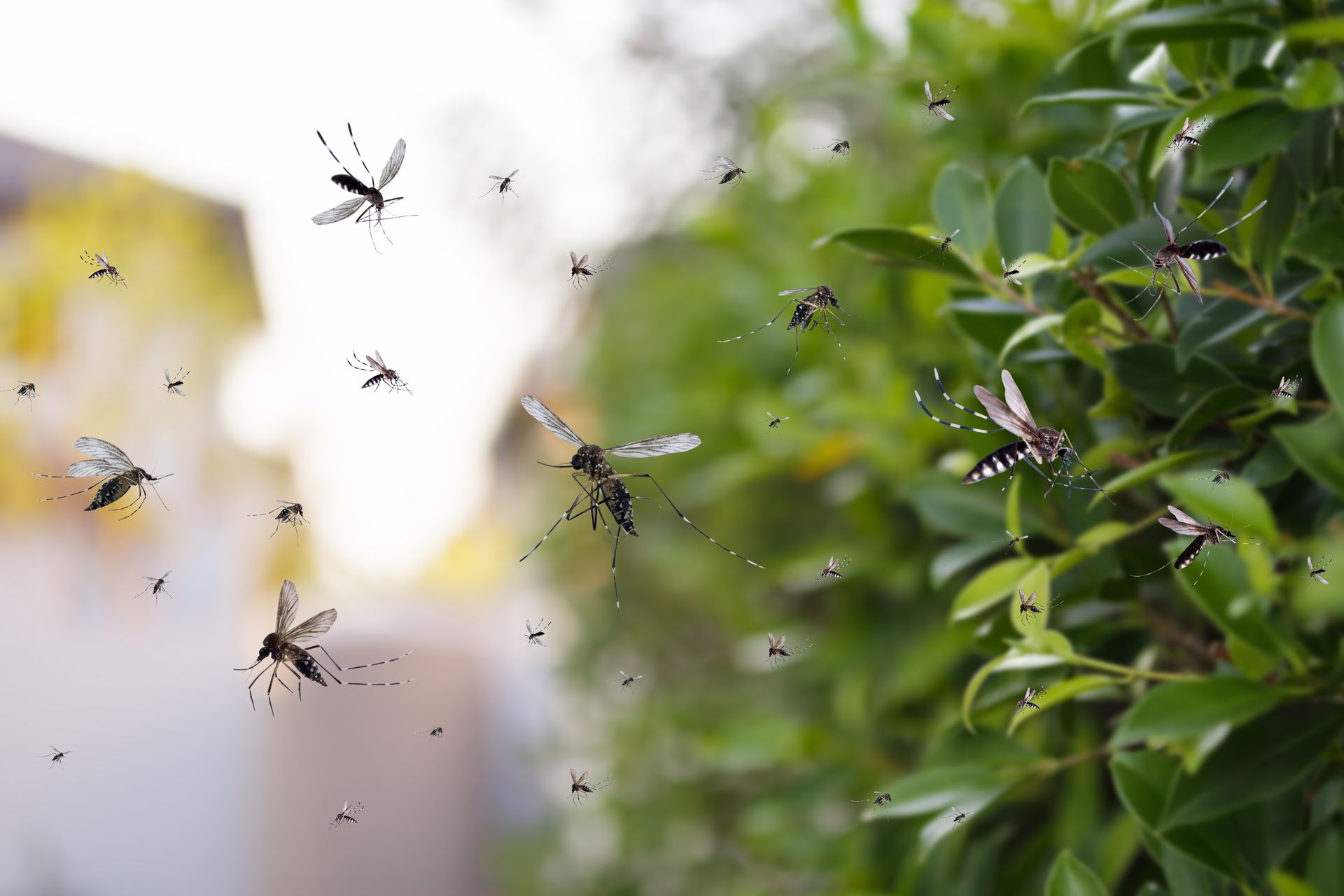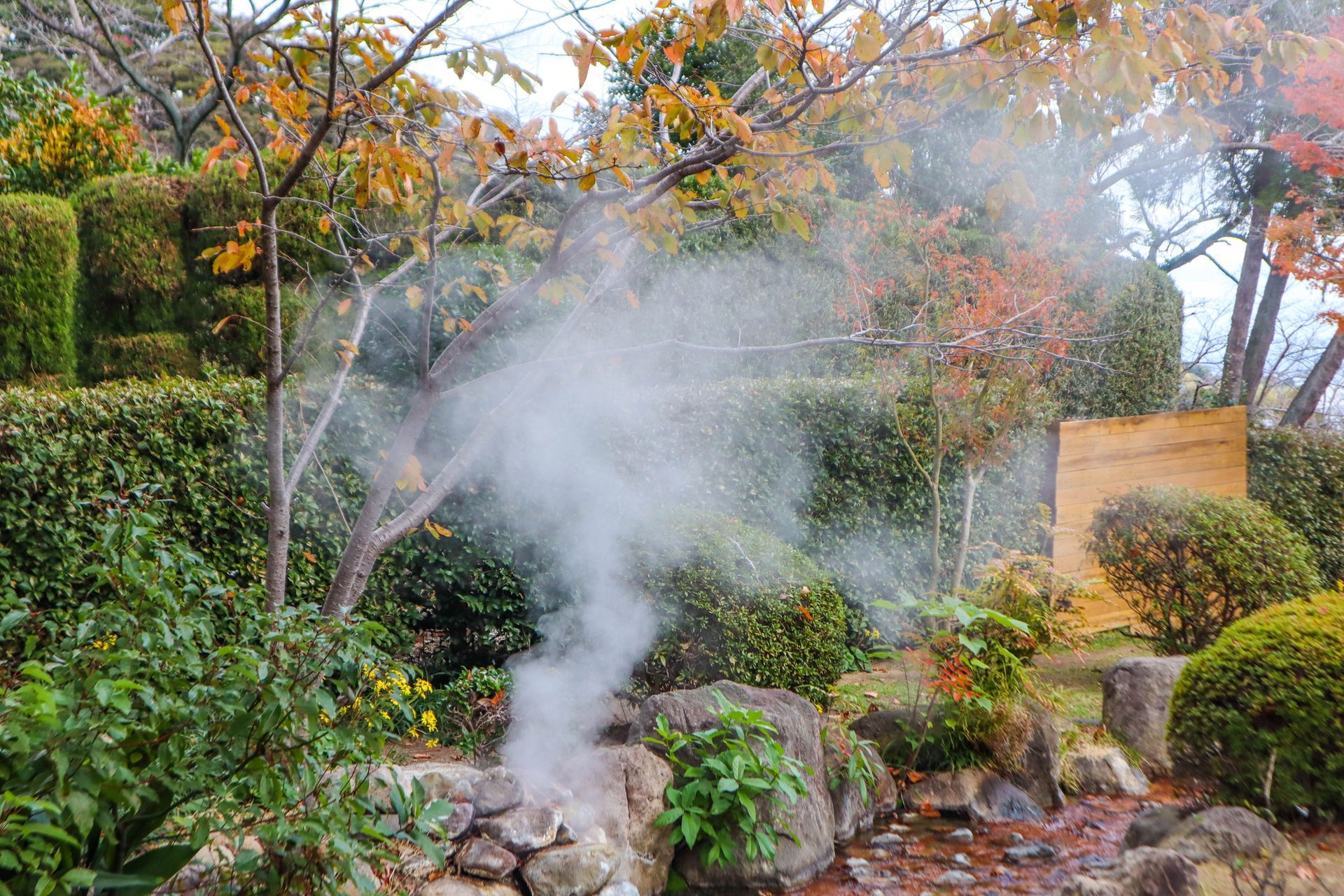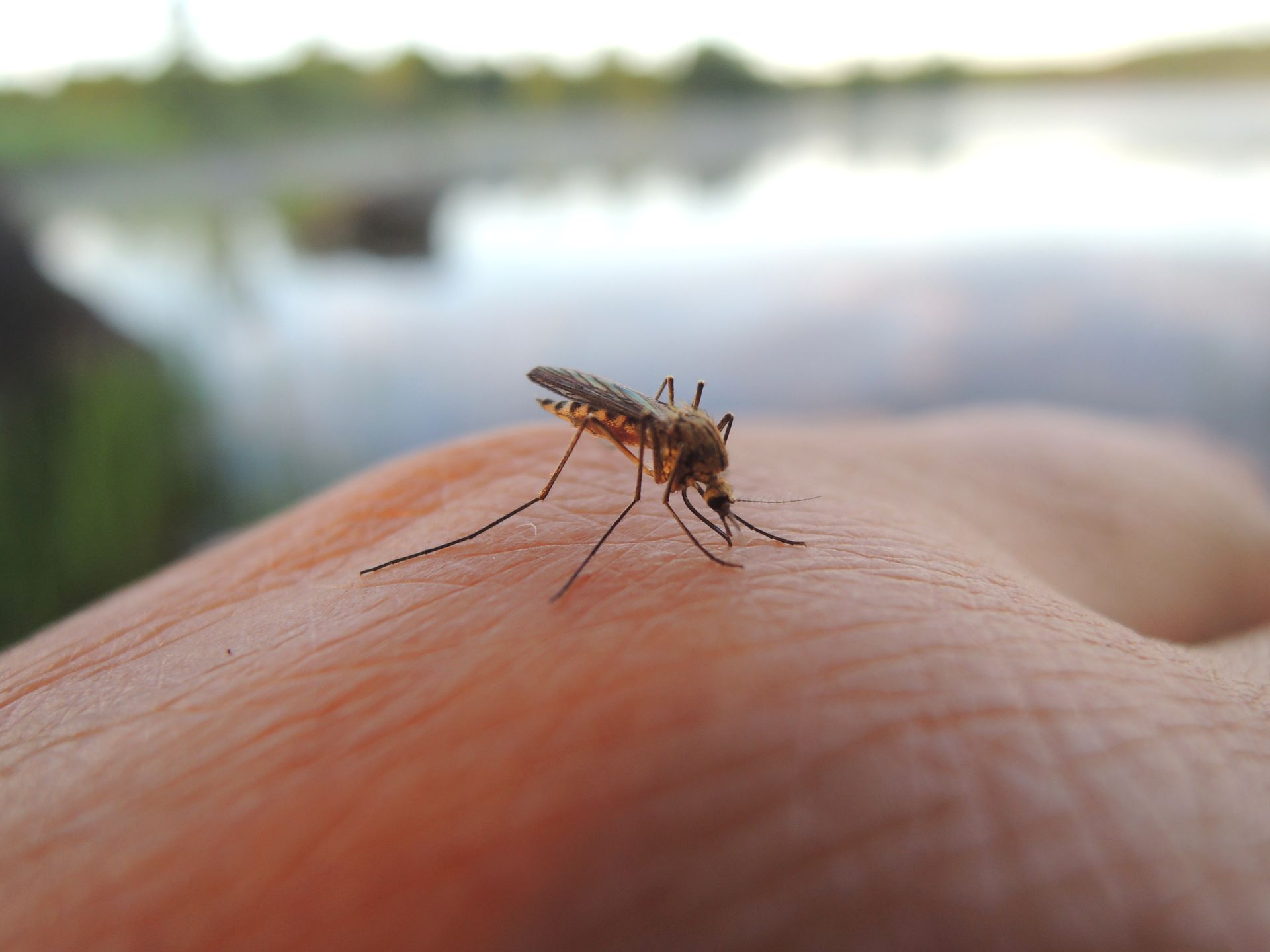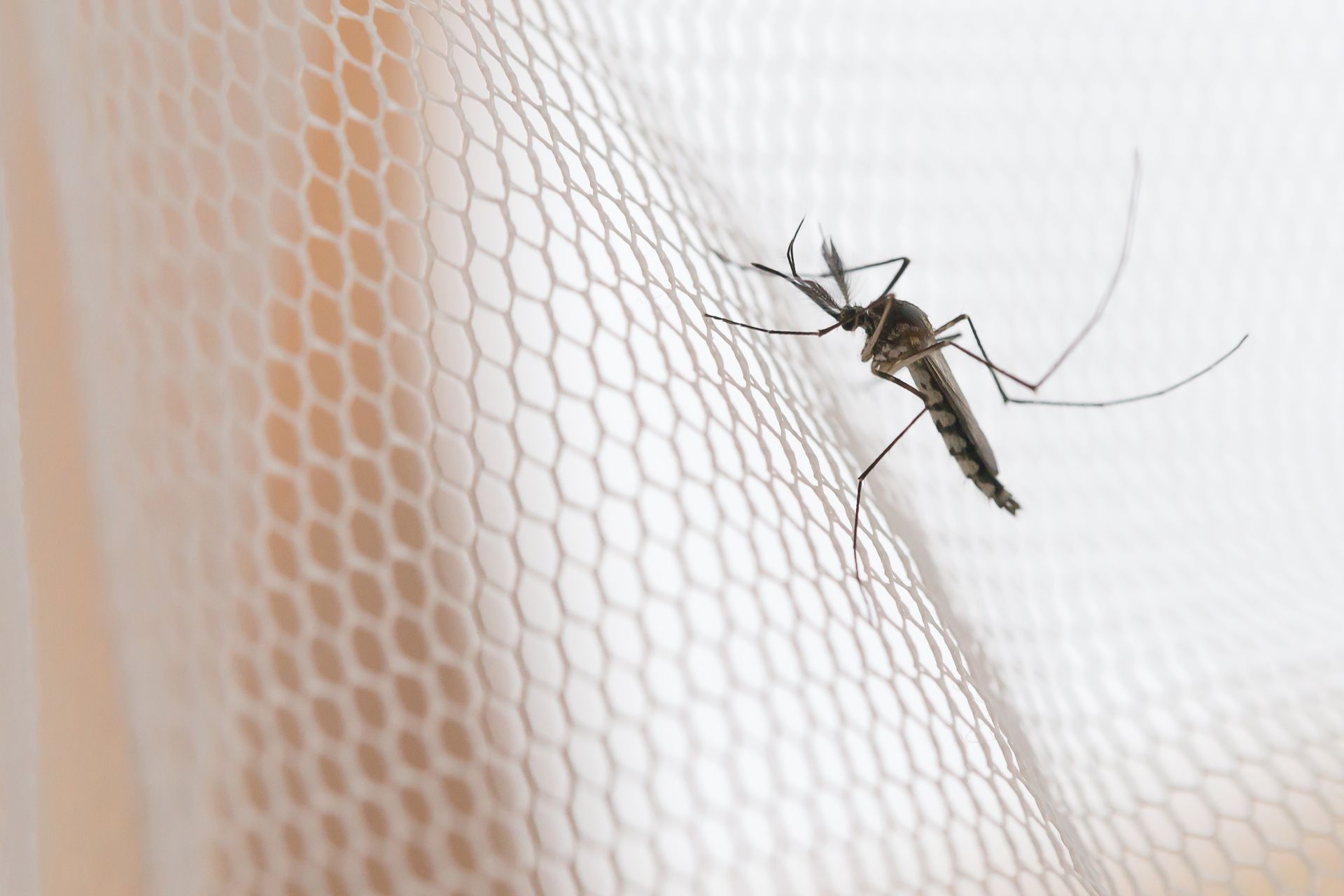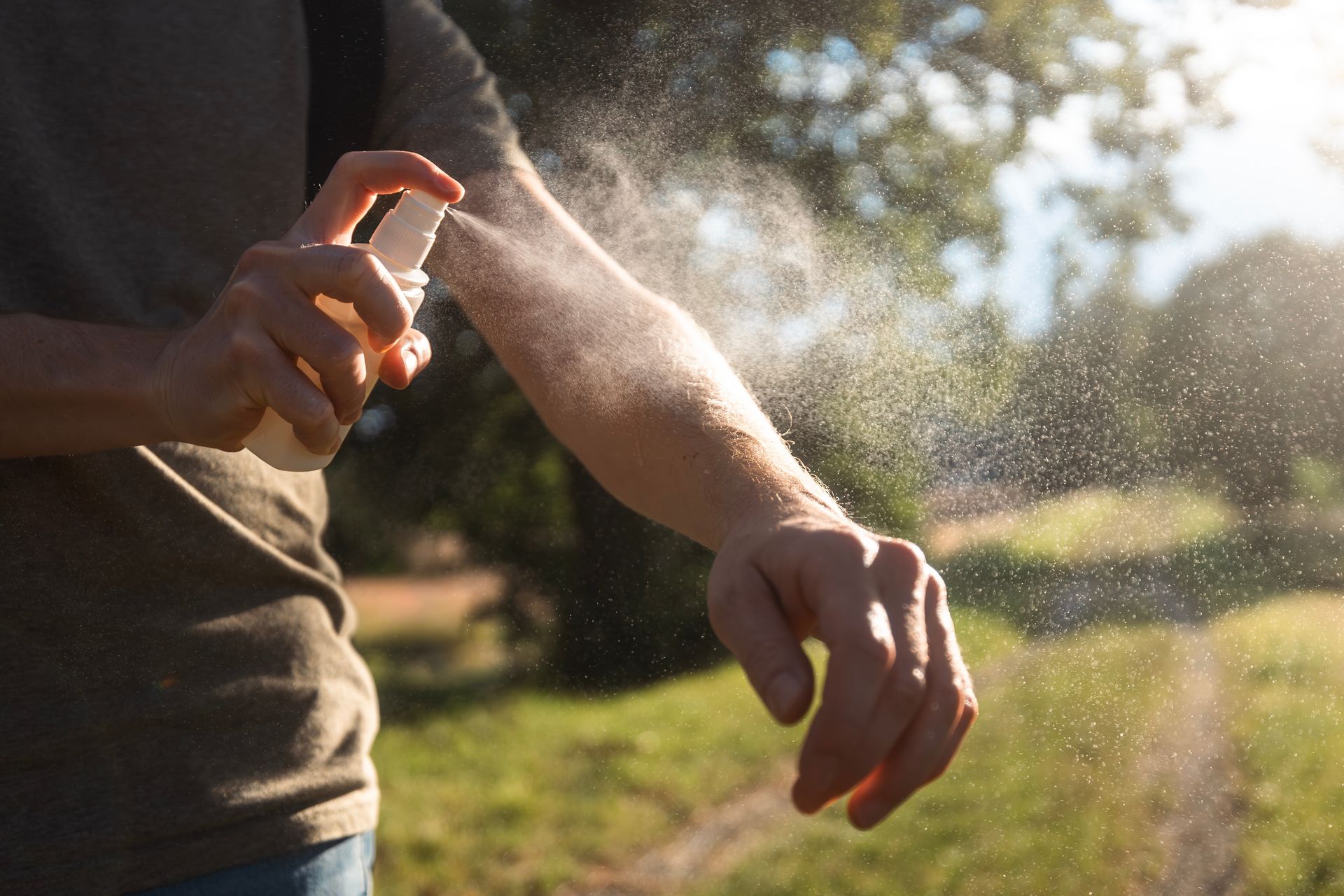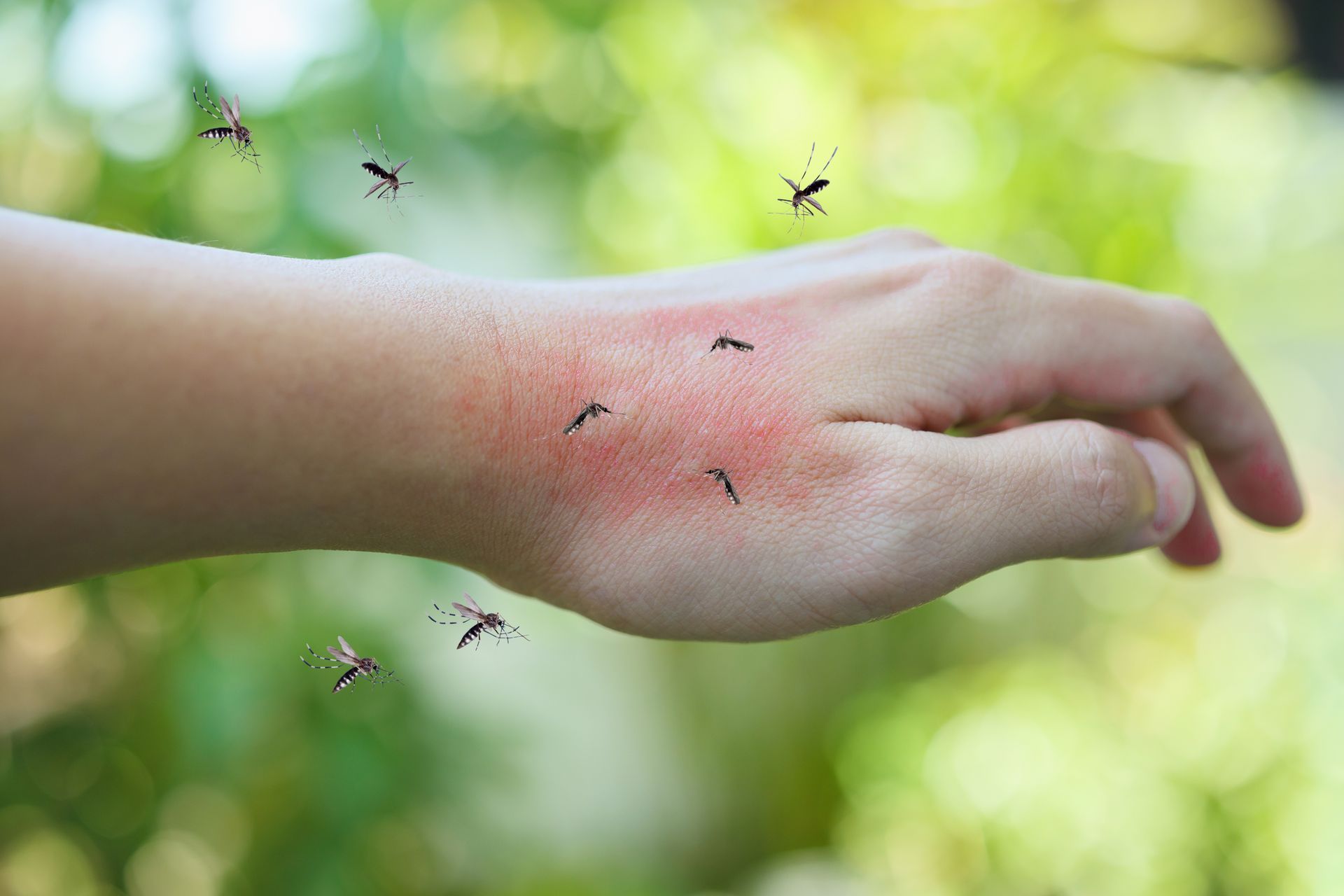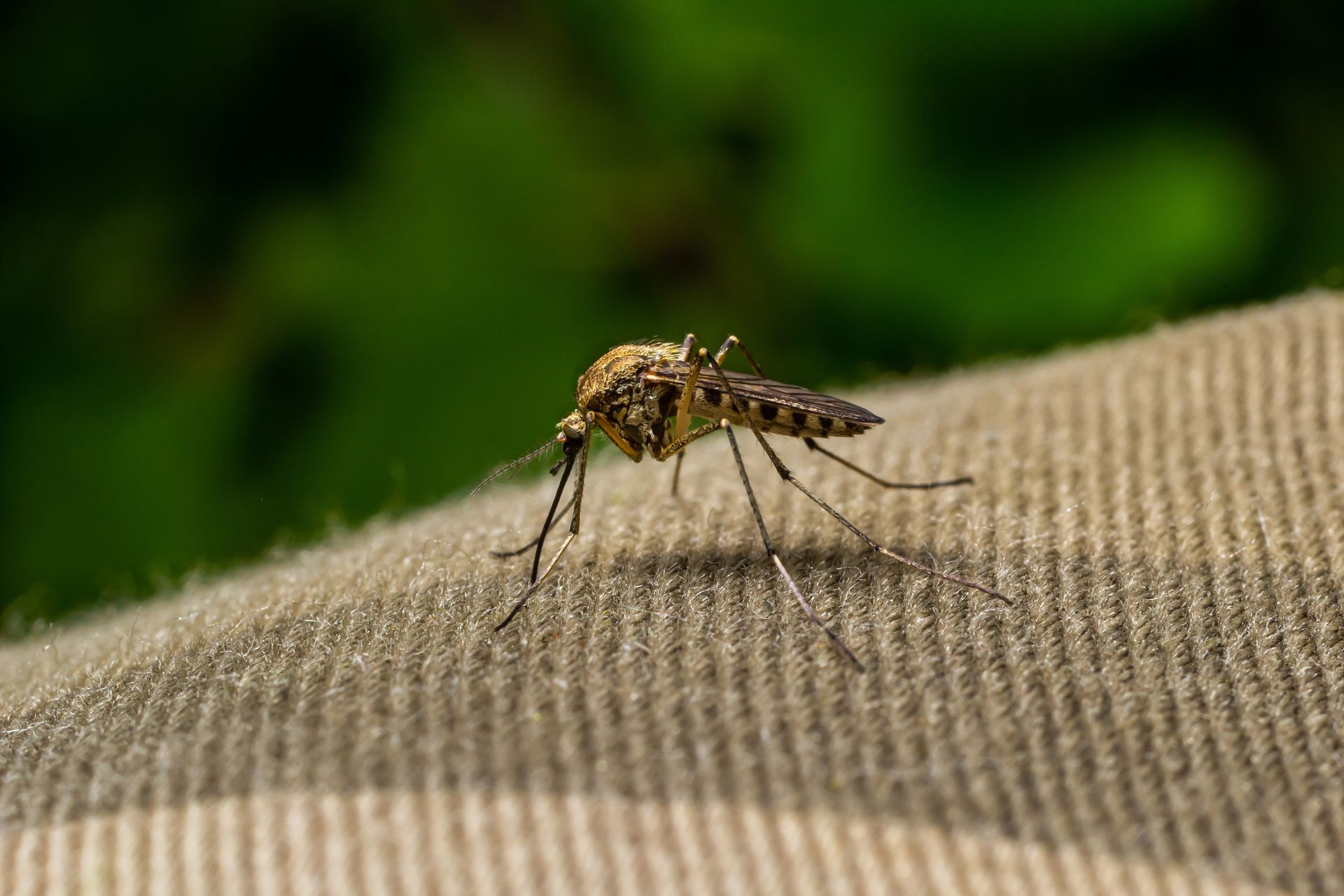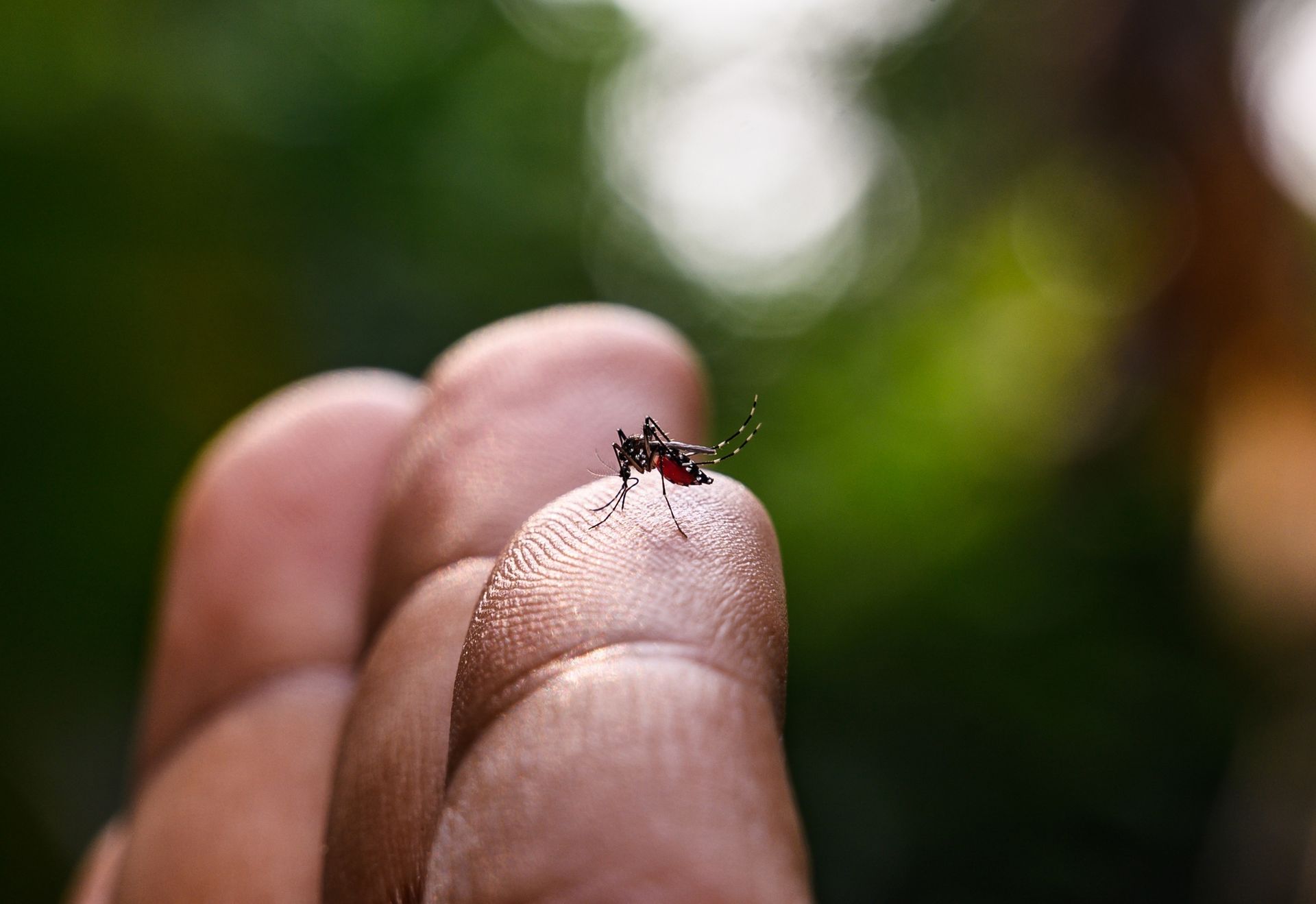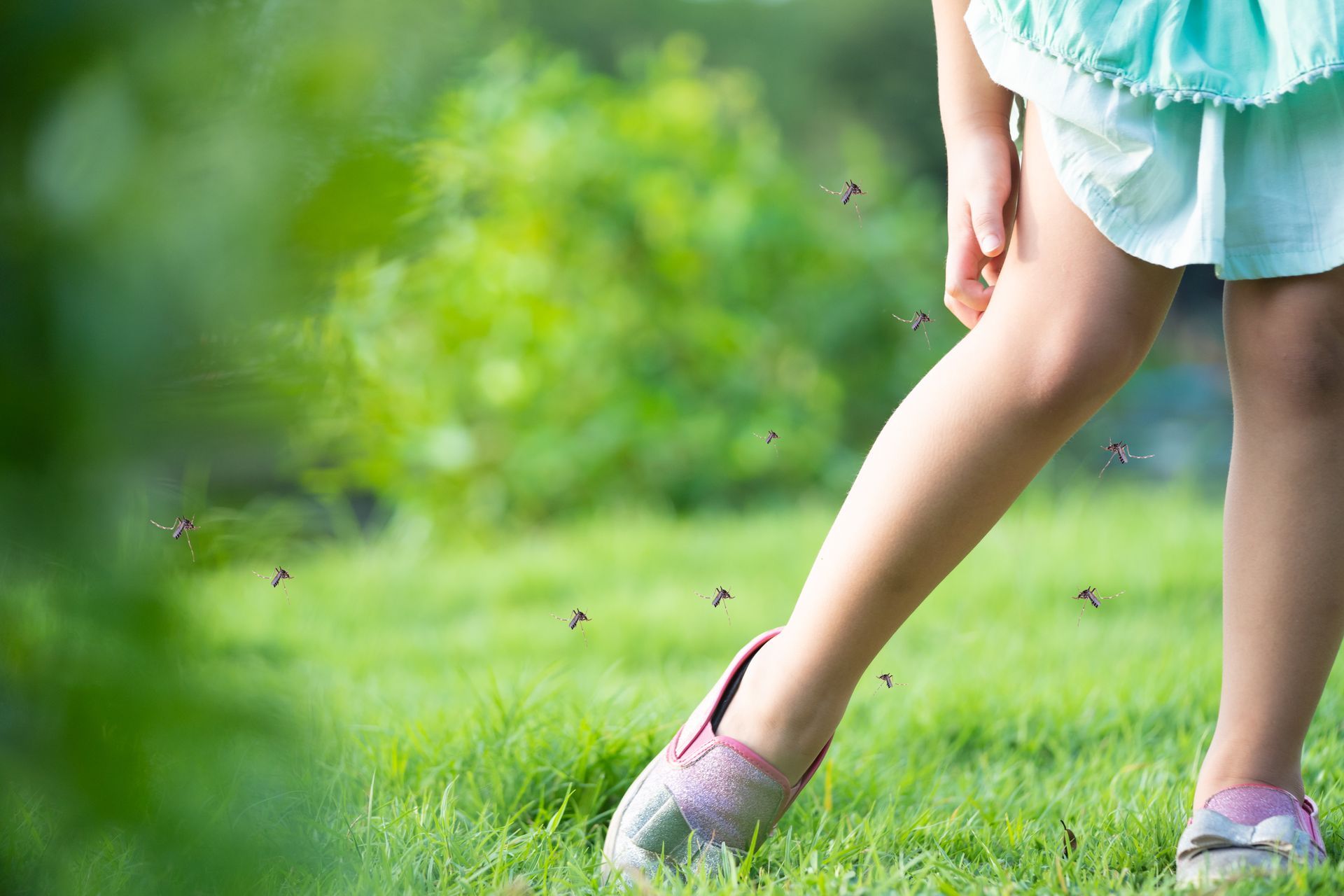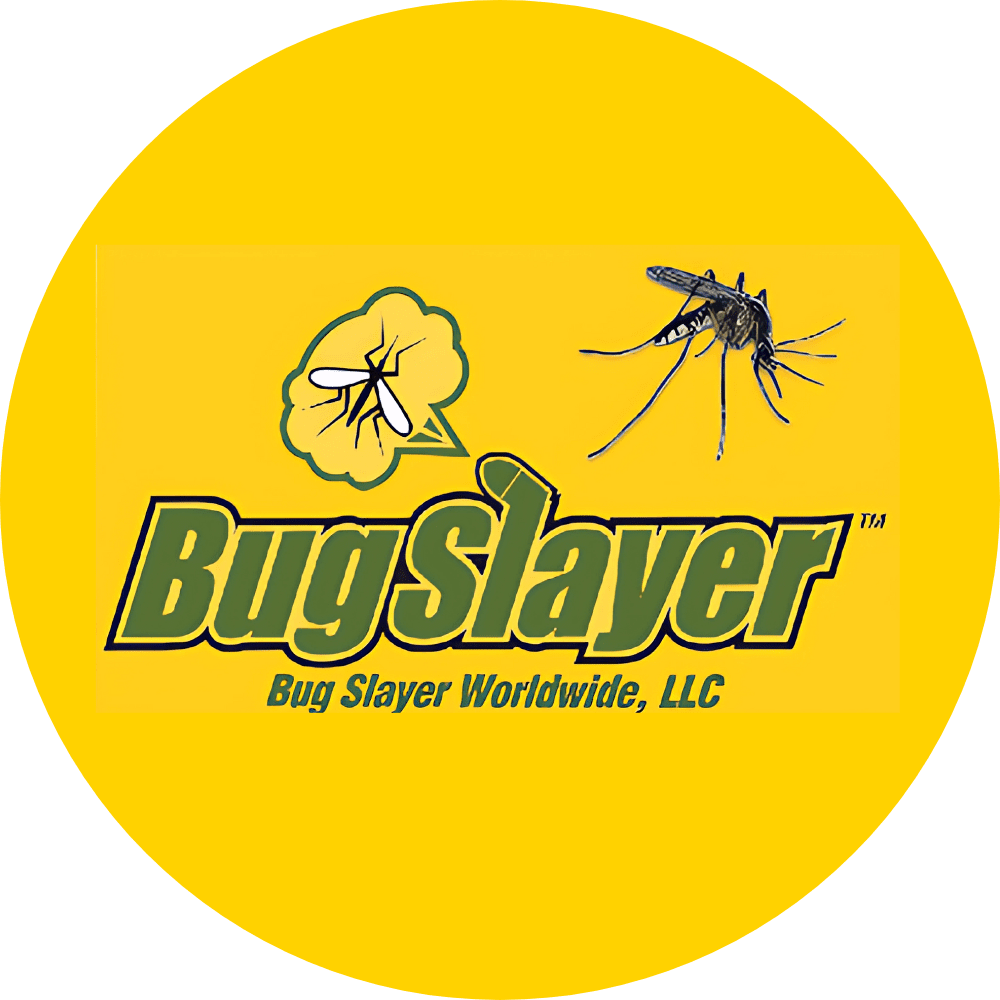Mosquito Life Cycle
Mosquito eggs don't sound very exciting, but the ability of a mosquito to reproduce and the areas in which they can lay eggs is almost mind-boggling. Here in Florida, the environment is perfect for mosquito reproduction and laying eggs. After a mosquito egg is laid, it can lie dormant for up to several months, even a year are more, until a time when water washes over them.
Mosquitoes can lay eggs year round, and all it takes is the introduction of water and the lifecycle of the mosquito takes off. Adult mosquitoes mate within the first few days after emerging. The male locates the females by listening for the sounds of their wings, which run flap up to 500 beats per second. The mosquitoes join in-flight; the male passes sperm to the females, perpetuating the mosquito lifecycle. The male dies shortly after mating occurs. Female mosquitoes have the capability of laying up to 100 - 300 eggs every 7-10 days after mating only once, and will typically lay 3 to 5 groups of eggs in their lifetime.
Mosquitoes lay their eggs on the surface of fresh or stagnant water and damp ground. The water can be in tin cans, barrels, a hole in a tree, horse troughs, ornamental ponds, swimming pools, puddles, creeks, ditches, catch basins or even saltwater marsh areas. Mosquitoes prefer water sheltered from the wind with grass and weeds. Some mosquitoes have the ability to lay their eggs on just damp soil; with some eggs being able to resist drying out, until the areas are flooded by water from rains or tidal flow. The Florida Department of Agriculture, in a study to count the number of mosquito eggs in a Central Florida pasture, estimated 100,000,000 eggs per acre in sod samples that were taken. Mosquitoes usually lay their eggs at night. They lay their eggs one at a time, sticking them together to form a raft of 100 to 300 eggs at a time. The raft of eggs looks like a speck of soot floating on the water and is about a quarter inch long and an eighth of an inch wide.
Mosquito Larvae in Tampa
Mosquito larvae stage is an interesting time in the lifecycle of the mosquito. It brings back memories of when my boys were little, and they bring in a jar of little wigglers that they got out of the neighbors birdbath, or from coy pond in our backyard the never seemed to circulate right.
Mosquito larvae are commonly called wigglers and must live in water from 7 to 14 days depending on the water temperature. Larva must come to the surface at frequent intervals to obtain oxygen through a breathing tube called a siphon. Culex and Aedes larva, since they do not have a breathing tube must lie parallel to the water surface in order to get a supply of oxygen through a breathing opening. During growth, larvae molt (sheds its skin) four times. The stages between molts are called instars. At the fourth instar, the larva reaches a length of almost a half an inch. When the fourth instar larva molts it becomes a pupa and moves on to the next stage of life.
Much of the activity that is provided by the mosquito control districts in the Tampa Bay area is related to the study and treatment of mosquito larvae. During this stage of life it is common for the districts to count and estimate mosquito populations based on the number of larvae found in certain areas.
Mosquito Pupa in Tampa
Mosquito pupa, commonly called" tumblers", must live in water from 1 to 4 days, depending upon the species and water temperature. Pupa may be quite active during this stage of life.
The pupa is lighter than water and therefore floats at the surface. It takes oxygen through two tubes called" trumpets". When it is disturbed it dives in a jerking, tumbling motion and then floats back to the surface. The pupa does not eat. The metamorphosis of the mosquito into the adult is completed within the pupa stage.
The adult mosquito splits the pupae case, like a cocoon any merges to the surface of the water where rests until its body can dry and harden.
Mosquito Adults in Tampa
Adult mosquitoes are truly our adversaries, they've been around for centuries. In the state of Florida, they were the main reason for slow development and growth of the population here. A few facts about adult mosquitoes are:
- Mosquito only weighs 1/25,000 of an once.
- Mosquitoes are responsible for more human deaths than any other living creature
- Only female mosquitoes bite, they need protein from the blood to lay their eggs
- Male mosquito survived by sucking on nectar and other plant juices.
- The welt that appears after a mosquito bite is an allergic reaction to the saliva that is injected into your skin to prevent your blood from clotting.
- Mosquitoes rarely travel farther than 300 feet from the birthplace.
- Light colors are less attractive to mosquitoes than dark colors.
- Mosquitoes are found all over the world even in the Arctic.
- Like humans, mosquitoes have food preferences.
- The attractive level of each individual to biting mosquitoes is based on a complex interaction of many chemical and visual signals such as body heat.
- One local species of mosquito feeds during the day, while many other species prevalent in our area feet at dusk and throughout the night time.
Mosquitoes Life Spans in Tampa
The life span of the mosquito varies widely. In some species about one third of the adult population dies daily. While the typical male lives only for about two weeks the female may survive up to six months or more depending on the species in the time of year.
In the short run, an adult mosquito can emerge from the pupae stage within a week to 10 days from the time the eggs are laid. In some cases where the environment is not right for development, this process can run as long as a year from the time the eggs are laid until the mature adult mosquito emerges.
Environment is the factor for increasing the generations of breeding and maturing mosquito populations. During the wet warm months of spring and summer and into the fall is very easy to produce 3 to 4 generations of mature biting mosquitoes annually. The environment in Tampa Bay seems to be one that was made for mosquito proliferation.
